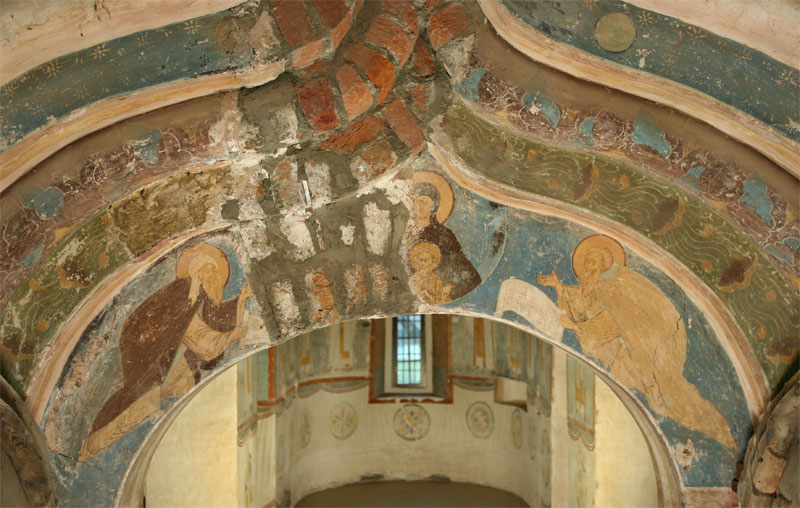
The Mother of God with the child. A medallion with a half-length figure of the Mother of God with the child Jesus. The child is blessing with his right hand while holding in his left hand a scroll that reminds of the teaching that enlightens and saves the human race. Similar images are placed on the side of the north-western corner vault, in the composition “Seeing a strange childbirth...” (Akathist, Kontakion 8)
St. John of Damascus (c. 675 – c.749), one of the renowned Fathers of the Church, an outstanding Christian theologian and writer of hymns. He served at the court of the caliph in Damascus and around 736 he took the tonsure in the St. Sabas Monastery near Jerusalem. He spent most of his life defending the Orthodoxy and veneration of the holy images during the iconoclastic period under Leo III (717-741). the author of three Apologetic Treatises against those decrying the holy images. He integrated Christian knowledge in his dogmatic work The Fountain of Wisdom that consisted of three parts: The Dialectics, The Book on Heresies and An Exact Exposition of the Orthodox Faith, written at the end of his life. The church tradition attributes John of Damascus with a great many hymns: canons of major feasts (the Easter, the Nativity, the Epiphany, the Ascension etc.) and a number of troparia, and stichera as well as compilation of the public worship Oktoikh Feast day: 4 (21) December. He is also depicted in the compositions “Because of you, O Full of grace, all creation rejoices” and “What shall we offer you, O Christ?”.
St. Cosmas of Jerusalem, Bishop of Maiuma († c. 787), Byzantine hymn writer, fellow monk of St. John of Damascus. He originated from Jerusalem, was brought up with John of Damascus and subsequently moved with him from Damascus to Jerusalem and settled down in the St. Sabas Monastery. In 743 he was appointed Bishop of Maiuma in Phoenicia. In the iconoclastic period he spoke in support of the Orthodoxy. The outstanding hymnographer composed canons on all days of the Holy week starting from Lazarus Saturday and for most of important feasts as well as canons to God Fathers on 26 December (8 January), great martyr George on 23 April (6 May) etc. Feast day: 12 (25) October. He is also represented in the composition “What shall we offer you, O Christ?”
|

